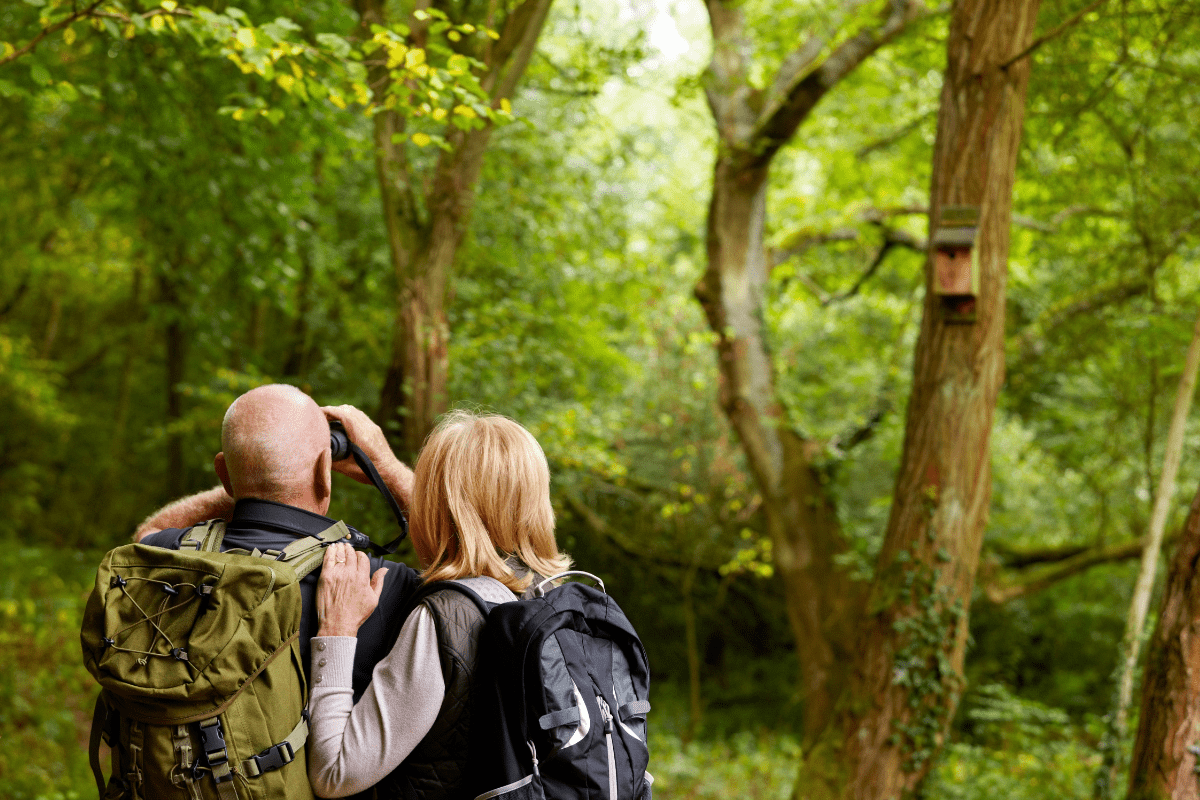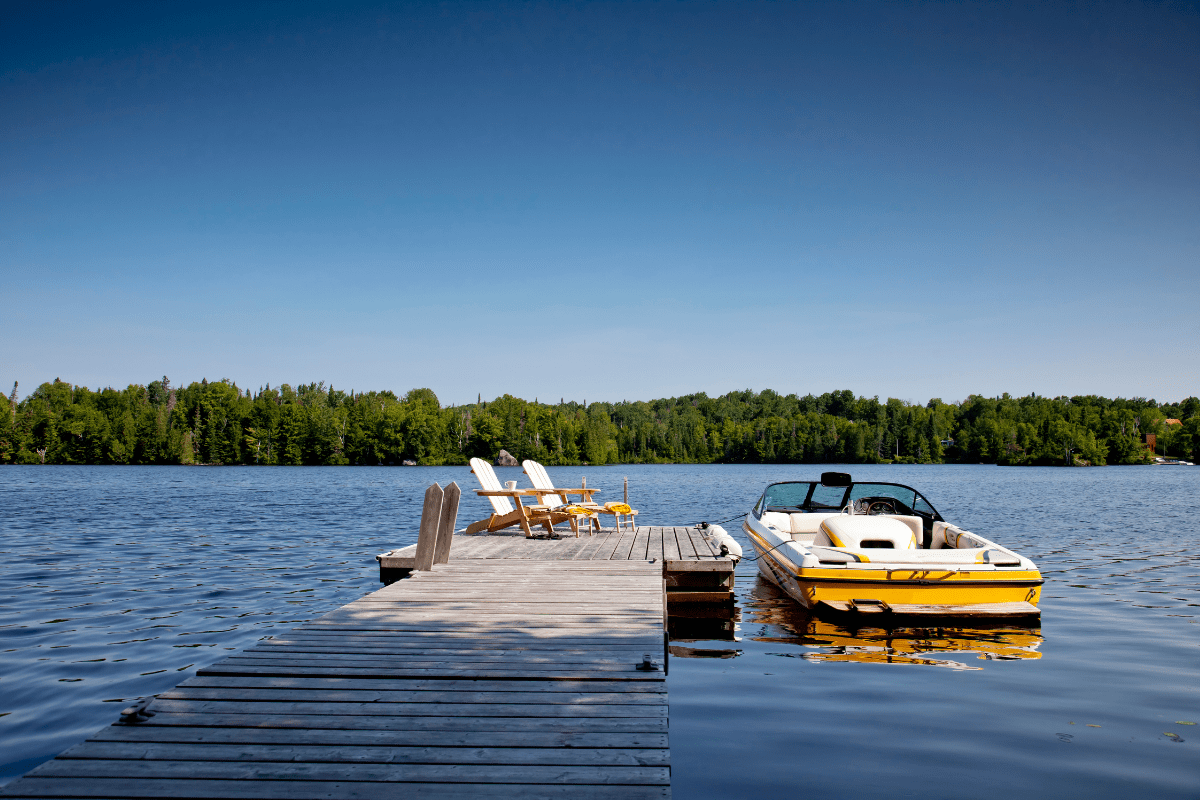Most people think Illinois is just cornfields and Chicago, but that's like saying pizza is just bread with stuff on it. The Prairie State actually hosts over 500 wildlife species across incredibly diverse ecosystems, from ancient cypress swamps to restored prairies where bison roam again.
Whether you're hoping to spot your first Bald Eagle or add rare warblers to your life list, this guide shares the insider knowledge that'll transform your wildlife viewing from "I think I saw something move" to "Did you see that Pileated Woodpecker?"
When to plan your wildlife adventure
Timing your visit can mean the difference between an empty forest and what feels like a nature documentary unfolding before your eyes. Illinois wildlife follows predictable seasonal patterns, and knowing these rhythms dramatically improves your chances of memorable encounters.
Spring migration brings the magic
Spring transforms Illinois into a wildlife viewing paradise, particularly from mid-April through mid-May. Professional wildlife photographer Beverly Merig puts it perfectly: "the region has more beautiful secrets to reveal" during this season.
Waterfowl kick things off with peak numbers from March 16-31. Then the real show begins. The first massive wave of Neotropical migrants arrives May 1-10, when warbler species jump from about 12 to 30 virtually overnight. It's like someone flipped a switch and suddenly every tree branch hosts a colorful visitor. Peak warbler diversity hits May 11-20, when experienced birders can spot 100+ species in a single morning.
Fall and winter offer unique opportunities
Fall migration provides a second chance at diversity, with September delivering peak songbird movement. October brings something special: massive hawk flights. Broad-winged hawks migrate in groups numbering hundreds to thousands in late September, creating those swirling "kettles" that make you stop your car and stare.
Winter transforms Illinois into eagle country. Over 3,100 Bald Eagles winter here, representing the largest population in the continental United States outside Alaska. January and February offer optimal viewing conditions, especially along the Mississippi River. Starved Rock State Park hosts its Eagle Watch Weekend on January 25-26, though honestly, any winter weekend works if you know where to look.
Northern Illinois delivers surprising diversity
You don't need to leave Chicago to find exceptional wildlife. Seriously.
Montrose Point Bird Sanctuary
This small sanctuary on Chicago's lakefront stands as Illinois' premier birding hotspot with over 300 bird species recorded. The famous "Magic Hedge" area attracts massive numbers of migrant songbirds during spring and fall migrations. Picture dozens of colorful warblers flitting through honeysuckle tangles while Lake Michigan sparkles in the background.
The best part? You can take public transit here. The sanctuary sits right off the lakefront trail, making it perfect for a quick morning birding session before work. Just don't blame me when you start showing up late because a rare bird appeared.
Illinois Beach State Park
Near the Wisconsin border, this 4,162-acre park offers both beach vibes and serious wildlife viewing. Over 300 bird species have been recorded here, including endangered Piping Plovers that nest on the beach. The annual hawk watch from September through November draws dedicated counters who tally thousands of migrating raptors.
Rangers recommend the 8-mile pea-gravel trail for wildlife viewing. Spring passerines peak in early May, while wintering ducks congregate from November through March. The nature center provides year-round educational programs, including some specifically designed for beginners who can't tell a duck from a goose (we've all been there).
Lake Renwick Preserve
Want to see hundreds of large birds without leaving the Chicago suburbs? Lake Renwick Preserve in Plainfield hosts one of northern Illinois' premier rookeries. From mid-August through early March, hundreds of pairs of nesting cormorants, great egrets, and great blue herons create scenes straight out of a nature documentary.
The Forest Preserve District offers public viewing programs during open seasons. Fair warning: the preserve closes March through mid-August to protect breeding birds, so plan accordingly. There's something humbling about watching a Great Blue Heron delicately feed its awkward teenage chicks.
Central Illinois: Where prairie meets water
Central Illinois might seem like endless corn and soybeans, but hidden gems await those who venture off the interstate.
Chautauqua National Wildlife Refuge
This Western Hemisphere Shorebird Reserve near Peoria attracts enormous waterfowl flocks. With 260+ bird species recorded overall, it's a wildlife biologist's dream. August brings peak shorebird diversity with 35+ species utilizing the managed water levels.
The refuge demonstrates how human management can enhance wildlife habitat. By manipulating water levels, managers create perfect conditions for different species throughout the year. It's like running a hotel where the guests have very specific room requirements, except the guests are birds and the rooms are mudflats.
Wildlife Prairie Park
Sometimes you want guaranteed wildlife sightings, especially when traveling with kids or impatient relatives. Wildlife Prairie Park near Peoria delivers. This 1,800-acre zoological park features native Illinois animals including bison, black bears, cougars, elk, and wolves in naturalistic settings.
Unlike traditional wildlife viewing that requires patience and luck (and often results in disappointed children), the park ensures you'll see these magnificent animals that once roamed Illinois freely. They even offer overnight lodging in converted train cabooses, because who doesn't want to wake up to wolves howling?
Goose Lake Prairie State Natural Area
As the best remaining tallgrass prairie in Illinois, Goose Lake Prairie hosts grassland specialists most people never see. Northern Bobwhite, bitterns, rails, and Sandhill Cranes call this preserve home. The visitor center features exhibits explaining prairie ecology, while the observation deck and accessible trail make viewing comfortable for all abilities.
Standing in this prairie, you can almost imagine what Illinois looked like before settlement. Except now there's a nice parking lot and restrooms, which honestly makes the experience much more enjoyable.
Southern Illinois: Where north meets south
Southern Illinois feels like a different state entirely, and the wildlife reflects this transition zone between north and south.
Cache River Wetlands
The Cache River area represents America's northernmost cypress/tupelo swamp, complete with 1,000+ year old cypress trees. This isn't your typical Illinois landscape. Spanish moss hangs from ancient trees while 100+ threatened or endangered species find refuge in this 14,489-acre wonderland.
The Henry N. Barkhausen Cache River Wetlands Center serves as your gateway to this ecosystem. A 2.5-mile boardwalk trail allows intimate swamp exploration without getting your feet wet. Walking among these ancient giants makes you feel tiny and temporary in the best possible way.
Shawnee National Forest
Spread across 280,000+ acres, Shawnee National Forest harbors 500+ wildlife species including 48 mammals, 237 birds, 52 reptiles, and 57 amphibians. Garden of the Gods offers spectacular rock formations alongside wildlife viewing opportunities that'll make your Instagram followers think you've left Illinois.
LaRue-Pine Hills hosts the famous "Snake Road," which closes twice yearly (March-May and September-November) to protect migrating snakes, including venomous timber rattlesnakes. Yes, there's a road that closes for snake migration. Only in Southern Illinois.
Essential gear that actually matters
Let's talk equipment without the gear-snob attitude. You don't need to spend your kid's college fund to enjoy wildlife viewing.
Binoculars: Your most important investment
Illinois Audubon chapter leaders consistently recommend 8×42 binoculars as the optimal balance. The Maven B1.2 8×42 delivers "close to Swarovski performance" at one-third the price. Can't swing that? The Nikon Monarch series offers excellent optics that won't require a second mortgage.
Here's what those numbers mean:
- 8x magnification (makes things 8 times closer)
- 42mm objective lens (bigger = brighter)
- Wide field of view (easier tracking)
- Good in low light
- Not too heavy for all-day use
Apps and guides for identification
Technology has revolutionized wildlife identification. The free Merlin Bird ID app from Cornell Lab works like Shazam for birds. Hold up your phone, and it identifies species by sound. eBird lets you track sightings and see what others are finding nearby.
For those who prefer analog, "Birds of Illinois Field Guide" by Stan Tekiela organizes species by color. Revolutionary concept: when you see a yellow bird, flip to the yellow section. Why didn't anyone think of this sooner?
Pro tips from people who know
After spending countless hours in the field (and making plenty of mistakes), here's what actually works.
Timing is everything
Early morning from dawn until 9am provides peak activity. Birds need breakfast too, and they're not shy about it. Late evening activates a different shift: bats, owls, and nocturnal mammals. Photographer Mike MacDonald notes that weekdays are much more peaceful at popular preserves.
Weather matters more than you'd think:
- Cold fronts trigger major movements
- South winds bring early migrants
- North winds concentrate birds along Lake Michigan
- Light rain makes wildlife less wary
- Post-storm periods produce exceptional activity
Finding wildlife like a pro
Forget randomly wandering trails hoping for the best. Focus on edge habitats where forest meets field, wetland edges, and areas near water sources. Look for movement rather than shapes. Most wildlife excels at looking like sticks, leaves, or rocks.
Listen first. Bird calls, rustling leaves, or breaking twigs often reveal hidden animals before you see them. That mysterious plop in the water? Probably a frog, but maybe a muskrat. That branch that just moved? Could be wind, could be an owl.
Photography ethics matter
Mike MacDonald emphasizes that "photographs can change the world" when captured responsibly. The "rule of thumb" test works: if your thumb held at arm's length doesn't cover the animal, you're too close. Period.
Never bait wildlife for photos. Those YouTube videos of photographers feeding foxes? Don't be that person. If an animal changes behavior (stops feeding, stares, appears nervous), back away immediately. The photo isn't worth disturbing wildlife or teaching animals that humans equal food.
Staying safe and comfortable
Nobody talks about the less glamorous aspects of wildlife viewing, but let's be real.
The tick situation
Ticks are Illinois' primary wildlife viewing hazard. American Dog Ticks remain most common and active from April through June. Blacklegged Deer Ticks in northern Illinois can transmit Lyme disease.
Prevention beats treatment:
- Wear light-colored clothing (easier to spot ticks)
- Tuck pants into socks (fashion be damned)
- Use EPA-registered repellent with 20% DEET
- Check for ticks every 2-3 hours
- Shower within two hours of returning home
Weather and seasonal considerations
Each season brings unique challenges. Spring means potential flooding and muddy trails. Summer creates heat exhaustion risks (carry more water than you think you need). Fall coincides with hunting seasons, so wear blaze orange in permitted hunting areas. Winter poses hypothermia dangers, especially near water.
Always check park websites for current conditions. That perfect trail might be closed due to flooding, or that scenic overlook might be under construction. Nothing ruins a day like driving two hours to find yellow caution tape.
Making wildlife viewing accessible
Illinois demonstrates strong commitment to accessible outdoor recreation, because everyone deserves to experience nature's wonder.
Wheelchair-accessible options
The "Disabled Outdoor Opportunities" program provides wheelchair accessible facilities throughout the state park system. Wildlife Prairie Park earned recognition as a "top 10 destination to visit in Illinois" partly due to its accessible trails and viewing areas.
Illinois features 508 wheelchair-friendly trails, including:
- Chicago Lakefront Trail (18.5 miles, fully paved)
- Fox River Trail (43 miles accessible)
- Garden of the Gods (0.5-mile flagstone observation trail)
- Multiple preserve boardwalks
- Wetland observation platforms
Family-friendly nature centers
Nature centers provide perfect introductions for young wildlife enthusiasts. Little Red Schoolhouse in Willow Springs and River Trail in Northbrook offer interactive exhibits meeting Next Generation Science Standards.
These centers typically include:
- Live animal presentations
- Hands-on discovery rooms
- Age-appropriate programs
- Summer day camps (ages 5-14)
- Scout badge programs
- Patient naturalists who answer endless "why" questions
Conservation success stories worth celebrating
Despite losing 90% of wetlands and 99.99% of natural prairie, Illinois conservation shows remarkable wins. Bald Eagles rebounded from near extinction to over 3,100 wintering individuals. Bison roam Illinois again after a 200-year absence. Endangered mussel species, translocated by the thousands since 2005, show promising survival rates.
This success doesn't happen by accident. Wildlife viewing generates over $1 billion annually in Illinois, with 41 million visitors to state parks in 2024 (the highest in 15 years). Every person who stops to watch a heron fish or marvels at migrating warblers contributes to conservation simply by caring.
Your wildlife adventure awaits
Illinois wildlife viewing offers endless discoveries for those willing to look beyond the obvious. Whether you're exploring Chicago's lakefront gems, seeking prairie specialists in central preserves, or venturing into southern swamps, incredible encounters await. Pack your binoculars, download those apps, and remember: the best wildlife viewing happens when you slow down, stay quiet, and let Illinois surprise you.
The next time someone claims Illinois is boring, take them to Montrose Point during spring migration or Cache River's ancient swamps. Show them thousands of Sandhill Cranes circling above Jasper-Pulaski or Bald Eagles fishing below Starved Rock. Share the silence of a prairie dawn or the chaos of a heron rookery.
Because once you start paying attention, you'll realize Illinois never was just corn and concrete. It's been wild all along.





